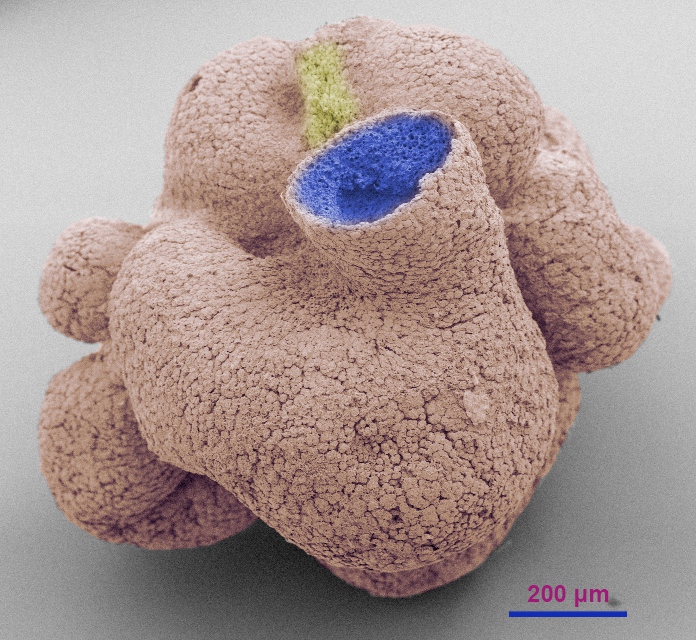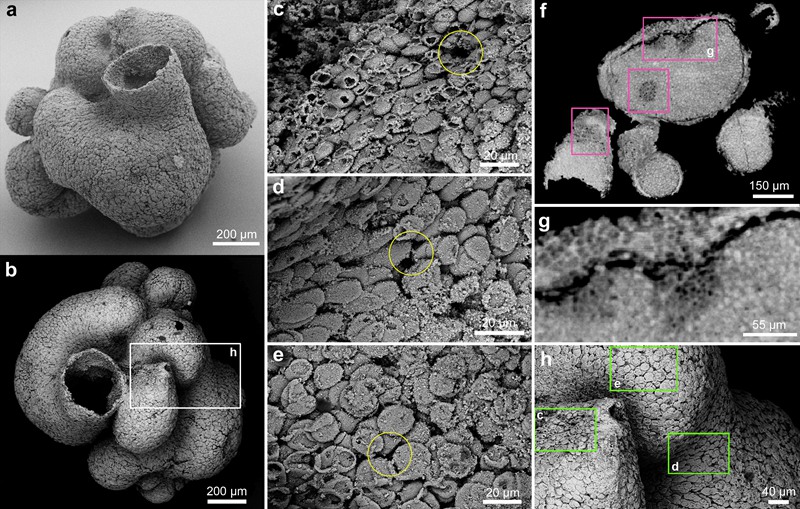
A scanning electronic microscope image of the 600 million-year-old sponge-like animal fossil
On March 9, 2015, Prof. ZHU Maoyan, Dr. YIN Zongjun and Dr. ZHAO Fangchen from Nanjing Institute of Geology and Palaeontology, Chinese Academy of Sciences and their international colleagues described a 600 million-year-old body fossil with sponge-like characteristics that predates the Cambrian period by 60 million years. This study has been published online in Proceedings of the National Academy of Sciences as PNAS plus.
Phylogenetic studies have suggested that sponges and eumetazoan animals may have shared a common ancestor more than 200 million years before the onset of the Cambrian period 541 million years ago, although unequivocal fossil evidence of such an ancestor is scant. ZHU Maoyan and colleagues analyzed a well-preserved 600 million-year-old fossil displaying multiple characteristics of modern sponges. Flat tile-like features on the external surface, punctuated with small pores, resemble pinacocytes on modern sponges. The authors report that the inner surface is covered with a regular pattern of uniform pits, with many pits surrounded by collars, similar to sponge choanocytes. Discovery of additional specimen would confirm that the fossil represents a Precambrian sponge, yet features of the fossil are consistent with sponge anatomy, including a basal anchor similar to a sponge holdfast and orifices for water inflow and outflow. The results suggest that advanced forms of sponges were likely extant 60 million years before the Cambrian period, and that fossils of similarly advanced eumetazoans may yet lie in the fossil record.
This research was supported by National Basic Research Program of China, Chinese Academy of Sciences, the National Natural Science Foundation of China and State Key Laboratory of Palaeobiology and Stratigraphy (NIGPAS).
Related information of this paper:Yin ZJ, Zhu MY, Davidson EH, Bottjer DJ, Zhao FC, Tafforeau P. Sponge grade body fossil with cellular resolution dating 60 Myr before the Cambrian. PNAS.

Overall anatomy of the specimen (a, b) and flattened surface cells and base or holdfast (c, d, e, f, g, h).
